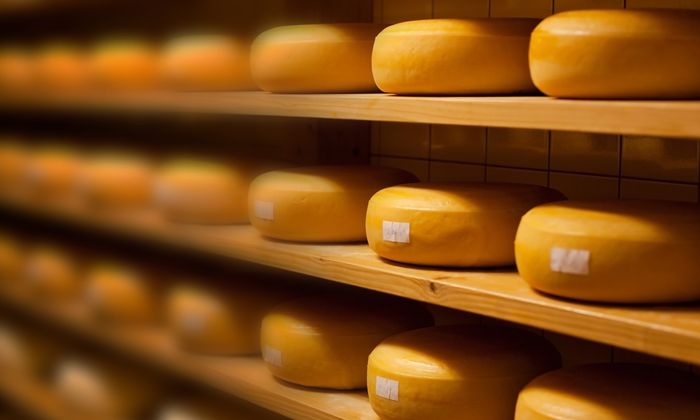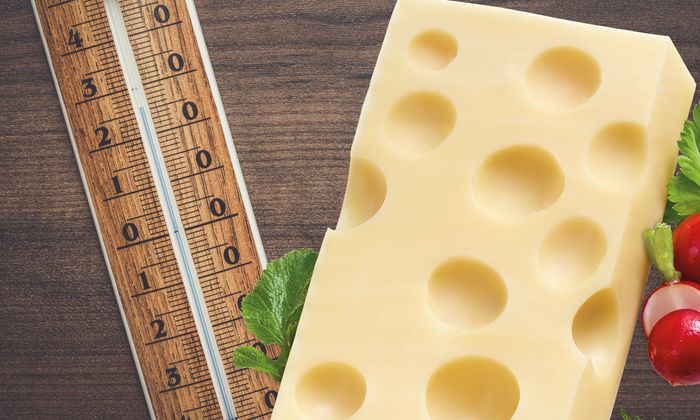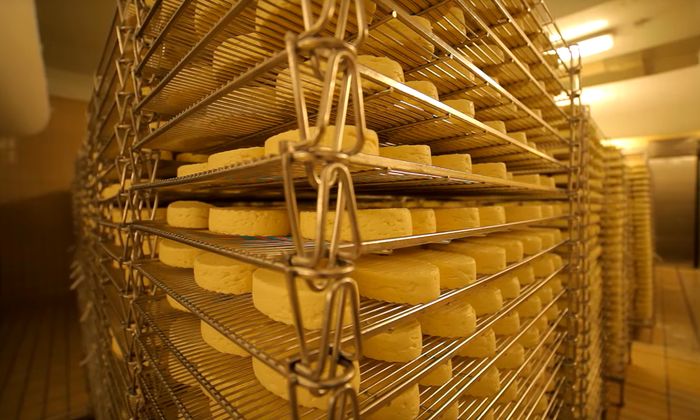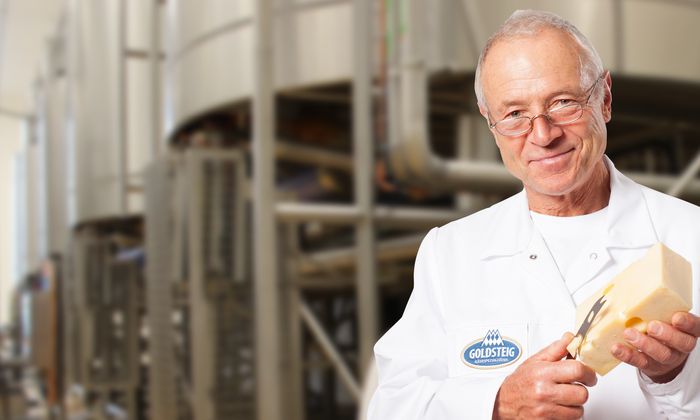From primal cheese to cheese variety
The basic substance for cheese is made with the main ingredient milk and usually just a few other ingredients. A coagulated mass is produced by acidification or adding rennet. Cream cheese, whey cheese and pasta filata cheese like mozzarella, or Protinella can be produced straight away. With other types you need a bit more patience as they have to mature. During the days, weeks or months of maturing , the respective type of cheese’sgoes really well with this. Rich aromas are released by the split free fatty acids. This explains the fact, among other things, that types of cheese, which are rich in fat, are usually the most aromatic. Amino acids and peptides, which are a resulting degradation product of protein, also contribute significantly to the development of the flavour.
Maturing is one of the most important parts of the cheesemaking process and is essential in the world of cheese. Every type of cheese, regardless of whether it’s a soft cheese, or a hard cheese, , has to mature. Maturing is, so to say, one of the golden rules of cheesemakinggoes really well with this. But wherever there are rules there are of course exceptions. Cream cheese is the only type of cheesethat finds its way to the cheese counter without any maturing over days, weeks or even months. Our mozzarella, from GOLDSTEIG also has to mature but manages with a very short maturing time of 1 – 3 days.
In terms of biochemistry, maturing is influenced by dairy cultures and coagulation enzymes. Whether a maturing process is crowned by success also depends in some cases on the maturing climate and the temperature in the maturing rooms. Every type of cheese has its own ideal temperature. It’s the ideal maturing time that makes maturing a success. This is also a reason why Emmental has its unique mild and nutty flavour.
Apart from ream cheese, whey cheese and pasta filata cheese, depending on the type , cheese should mature for days, weeks and even months. The maturing process can happen in special rooms, for example where both the humidity and temperature can be kept constant or regulated. The typical holes in cheese (e.g. in our GOLDSTEIG Emmental) are the result of gas developing during this maturing process, which microorganisms are responsible for. Generally, the biochemical reactions are extremely complex during maturing and differ according to the type . Essentially, the appearance, consistency, flavour and smell are crucially determined and developed by the changes to protein and fat.
The craft of cheese maturing and refining requires a great deal of knowledge and experience. Affineurs are cheese agers or refiners. Affineurs have profound and extensive knowledge. The art of affineurs can be seen as its very own craft. Each one has their own style and can turn every single cheese wheel into a personal work of art. Affineurs usually work in cheese cellars and look after their wheels there. The term “Maître fromager affineur” is not an official title but represents the highest title for a cheesemaker. There are just a few hundred people in the world who have the honour of holding the title “Maître fromager affineur”.





